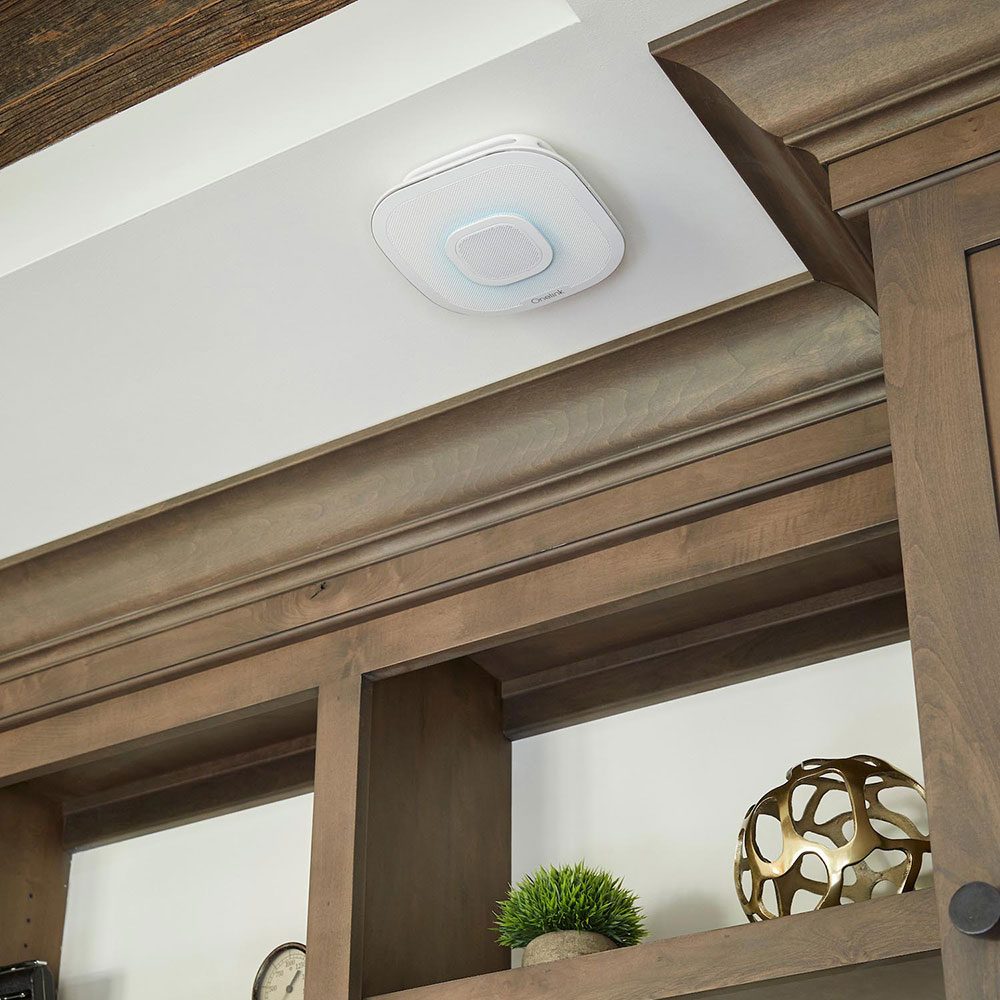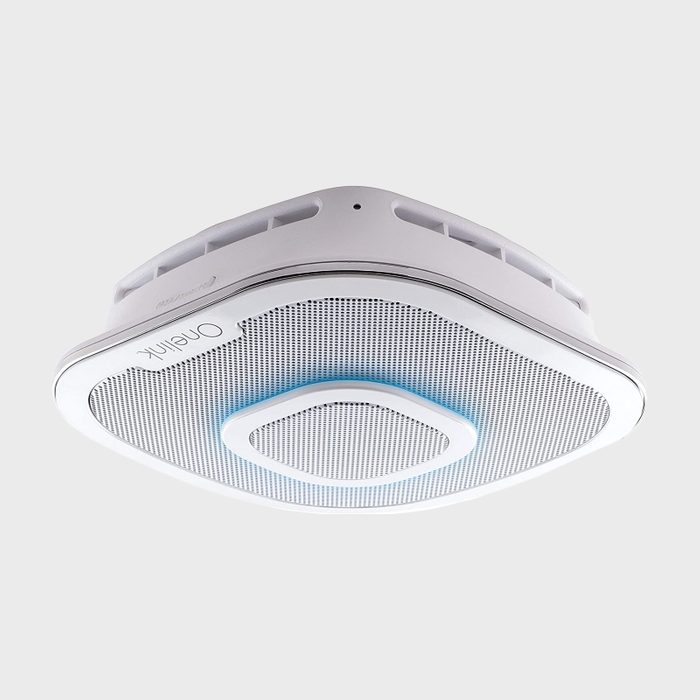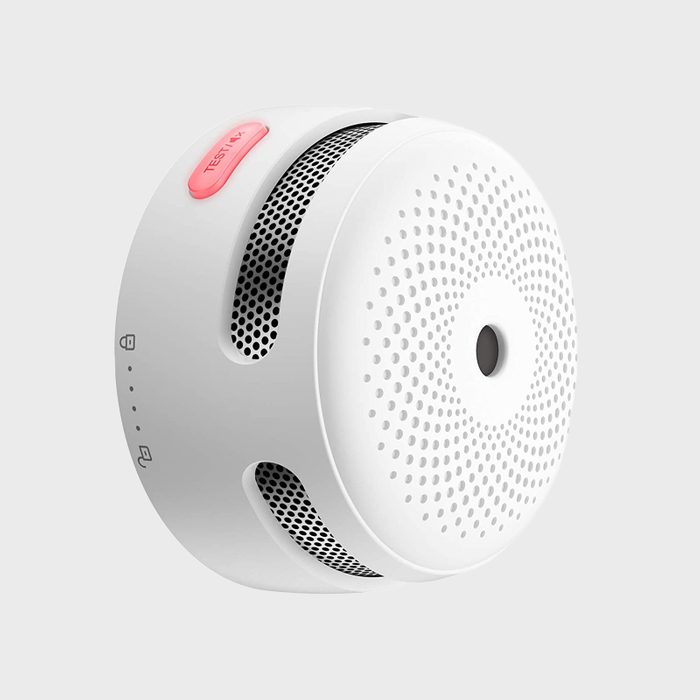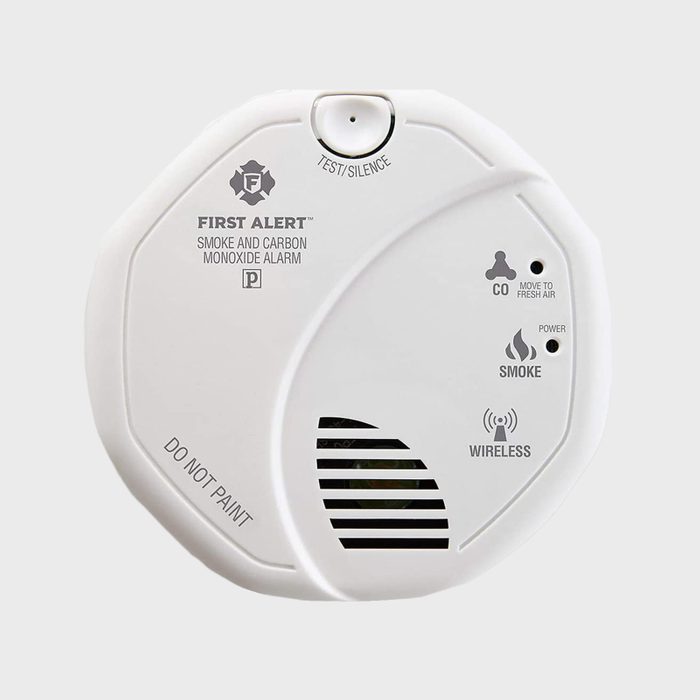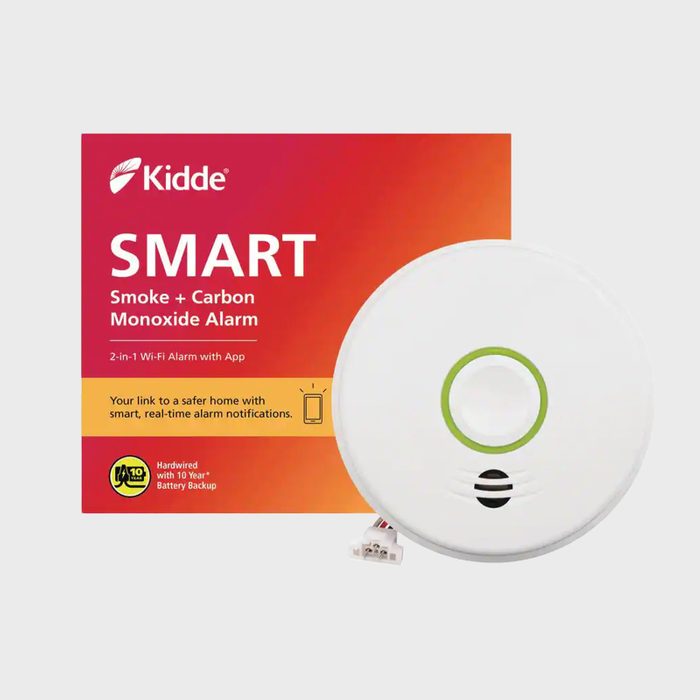Google’s Nest Protect brings the most comprehensive range of features at $119 per unit. It includes a CO detector and real-time alerts, as well as voice and color-coded signals to identify threat type and interconnected alarms (which don’t require WiFi). It also offers hardwire and battery-powered options, and a Split-Spectrum Sensor that detects both slow and fast-burning fires.
Make sure to use the recommended lithium batteries; standard ones will drain quickly. Note that it isn’t fully integrated with Google Home, which means you’ll probably need to use the Nest app with it instead.
First Alert’s OneLink Safe & Sound includes many of the features of the Nest Protect, plus a built-in AirPlay 2 speaker for music, which can be voice-controlled with Alexa. Highlights include a CO detector, real-time alerts, room-specific voice alerts, color-changing LED, wireless connection with other OneLink alarms, backup battery-strength monitor and built-in night light with adjustable brightness.
It connects to your smartphone via Bluetooth to Apple HomeKit and Amazon Alexa, although with Alexa the alarms won’t trigger Routines. It also works when not connected to a smart-home hub.
Downsides include no early warning option, no battery self testing (although you can test it through the app), no battery-only option (just hardwire), no ionization detector and a hefty $265 list price. Note: These are sometimes sold deeply discounted.
At around $40, the X-Sense won’t empty your wallet even if you buy several for the whole house. This compact alarm is just for smoke (no CO). Features include real-time alerts, automatic self-testing for battery and power connection and in-app silencing.
Downsides include a lack of integration with smart-home platforms, no ionization sensor, no hardwire option and no UL listing, although the manufacturer says it conforms to UL standards. It uses a three-volt lithium CR123A battery and the Tuya smart app. Be aware: It only connects to 2.4GHz WiFi networks. Buy it solo or in a three-pack.
If you own a Ring Alarm or other Z-Wave home-automation system, the First Alert Z-Wave Plus Smoke/CO Alarm (2nd Generation) provides the basics for $40. Features include CO alarm and real-time alerts. Downsides: It’s battery-powered only (no hardwire model) with no ionization sensor, no voice alerts, no self-testing, and no wireless interconnectivity between alarms.
New for 2022, the $90 Kidde Smoke and Carbon Monoxide Detector is a decent compromise between features and price.
Voice alerts warn of fire, CO and low batteries. Other features include real-time alerts, photoelectric sensor, in-app ability to silence false alarms, notifications to friends and family when smoke or CO is detected, a colored LED status ring and compatibility with existing Kidde interconnected alarms as long as those have AC interconnect capability.
It’s also compatible with Amazon Alexa and Google Assistant, so you can use voice commands to check the alarm status and connection. Hardwire is the only option.
Best Free Hack for Existing Detectors
If you have Alexa or Google Home, you can turn your existing old school smoke detectors into smart ones. Just program Alexa/Google to send an alert to your phone or email when their device hears the smoke alarm activate.
Garrett Aitken/Getty Images
Best Inexpensive Hack for Existing Detectors
If you already own a Ring or Alexa Guard system, add a listener that will send an alert to your smartphone when it hears one of your existing smoke detector alarms go off.
Depending on your system, the Ring Alarm Smoke and CO Listener or the Amazon Echo Dot for Alexa will also alert you to the sound of shattering glass, potentially foiling a break-in. The Echo Dot also includes a built-in clock and speaker.



















